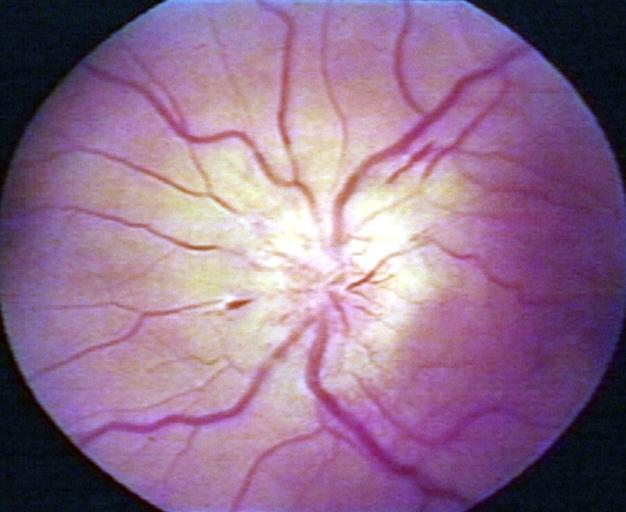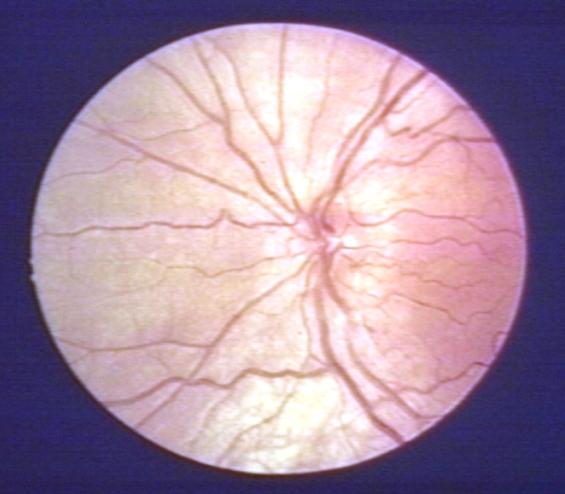Papilledema
|
Papilledema |
|
Diagnosis |
|---|
|
Treatment |
|
Case Studies |
|
Papilledema On the Web |
|
American Roentgen Ray Society Images of Papilledema |
Template:Search infobox Editor-In-Chief: C. Michael Gibson, M.S., M.D. [1]; Associate Editor(s)-In-Chief: Kalsang Dolma, MBBS
Synonyms and Keywords: papilloedema
Overview
Pathophysiology
Causes
Common Causes, Causes by Organ System, Causes in Alphabetical Order
Differentiation of Papilledema from other Disorders
Papilledema should be distinguished from pseudopapilledema which is caused by
- Optic disc drusen
- Tilted optic disc
Epidemiology and Demographics
Papilledema occurs in approximately 50% of those with a brain tumour.
Diagnosis
Checking the eyes for signs of papilledema should be carried out whenever there is a clinical suspicion of raised intracranial pressure. Because of the (rare) possibility of a brain tumor, pseudotumor cerebri or cerebral venous sinus thrombosis, all of which can increase intracranial pressure, this examination has become common for patients suffering from headaches.
Physical Examination
Eyes
-
Papilledema.
-
Pseudopapilledema.
There are 10 hallmarks of papilledema:
- Blurring of the disc margins
- Filling in of the optic disc cup
- Anterior bulging of the nerve head
- Edema of the nerve fiber layer
- Retinal or choroidal folds
- Congestion of retinal veins
- Peripapillary hemorrhages
- Hyperemia of the optic nerve head
- Nerve fiber layer infarcts
- Hard exudates of the optic disc

